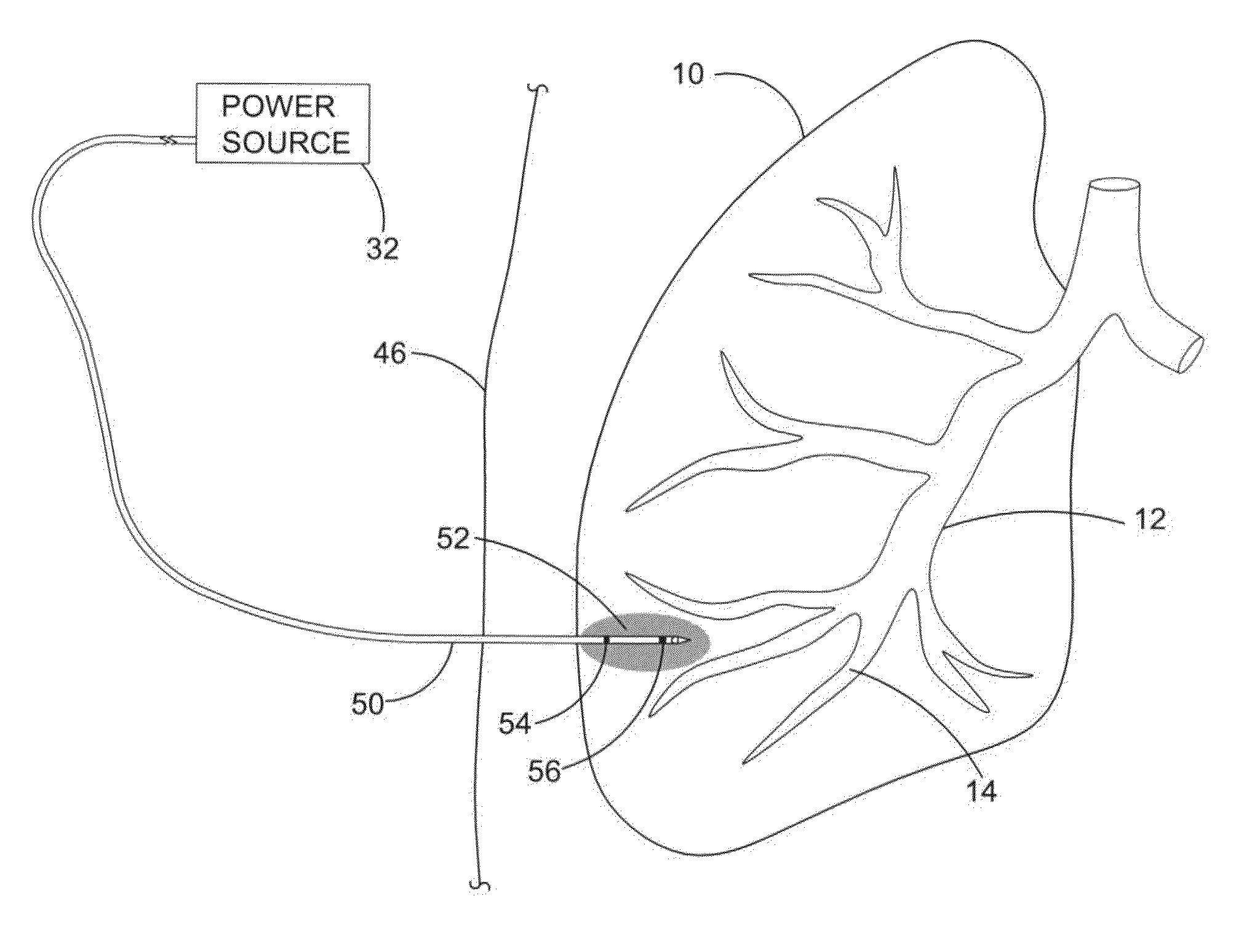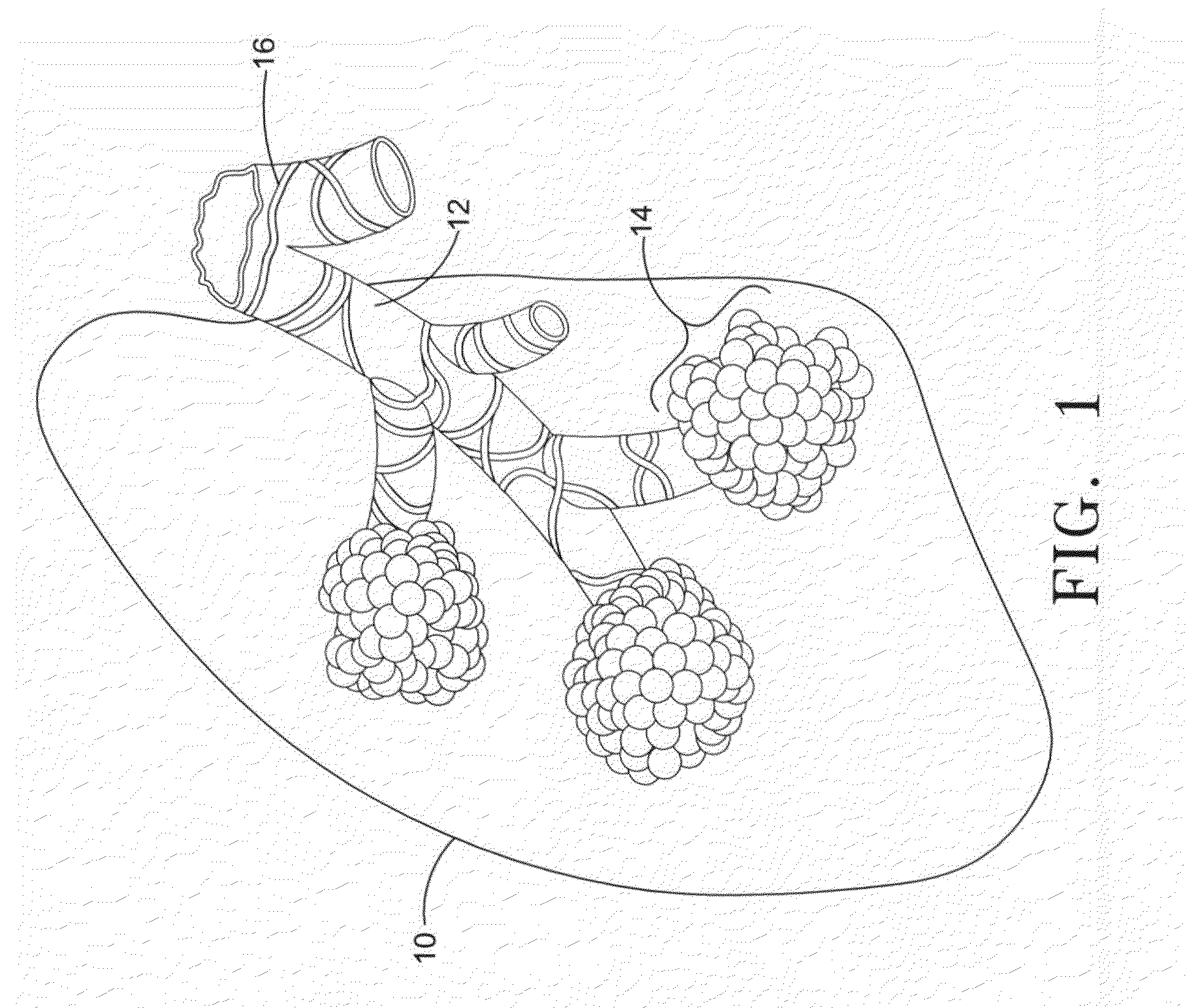Irreversible electroporation (IRE) for congestive obstructive pulmonary disease (COPD)
a technology of congestive obstructive pulmonary disease and irreversible electroporation, which is applied in the field of medical procedures, can solve the problems of clogging of passages, affecting lung function, and affecting lung function, and achieves the effect of enhancing lung function
- Summary
- Abstract
- Description
- Claims
- Application Information
AI Technical Summary
Benefits of technology
Problems solved by technology
Method used
Image
Examples
Embodiment Construction
[0035]FIG. 4 shows the endrotracheal method of performing IRE on a lung (10) affected by chronic bronchitis. A catheter (24) is advanced through the trachea (26) to a diseased region (28) of the bronchus (12). Advancement through the trachea (26) is relatively simple and will optionally require a guidewire to select the advancement route through to the branching bronchus (12). Steering of the catheter (24) may be effected under real time imaging using video assisted thoracic surgery (VATS). Once the catheter (24) is in place inside the diseased region (28), a flexible IRE device (25) is inserted through the catheter (24) to the diseased region (28) of the bronchus (12). The flexible IRE device is used in the endrotracheal method because it allows for the device to be easily steered through and properly positioned within the delicate intricacies of the lung (10) and into the bronchus (12). With the flexible IRE device (25) within the diseased region (28) of the lung (10), an IRE powe...
PUM
 Login to View More
Login to View More Abstract
Description
Claims
Application Information
 Login to View More
Login to View More - R&D
- Intellectual Property
- Life Sciences
- Materials
- Tech Scout
- Unparalleled Data Quality
- Higher Quality Content
- 60% Fewer Hallucinations
Browse by: Latest US Patents, China's latest patents, Technical Efficacy Thesaurus, Application Domain, Technology Topic, Popular Technical Reports.
© 2025 PatSnap. All rights reserved.Legal|Privacy policy|Modern Slavery Act Transparency Statement|Sitemap|About US| Contact US: help@patsnap.com



